Art XX
Guppy Breeding: Selection and Elimination
RUBRIEK: Guppy Kweek English Translation
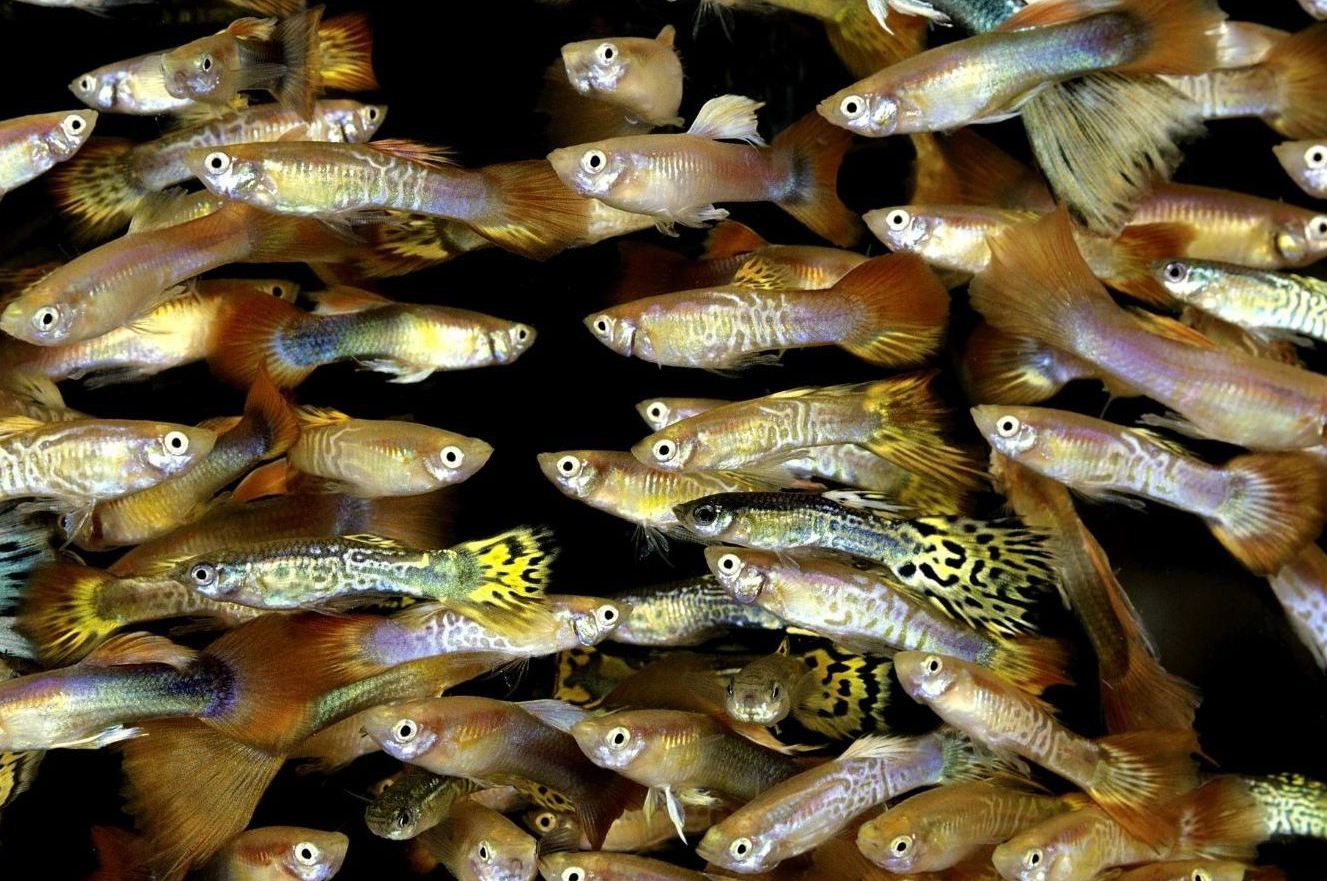
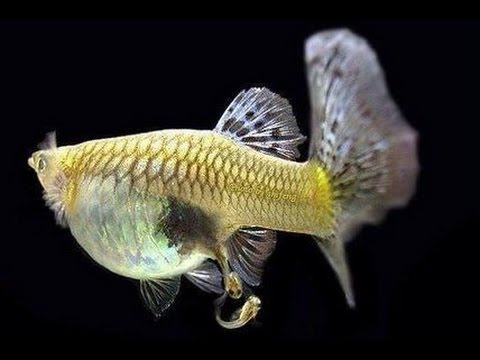


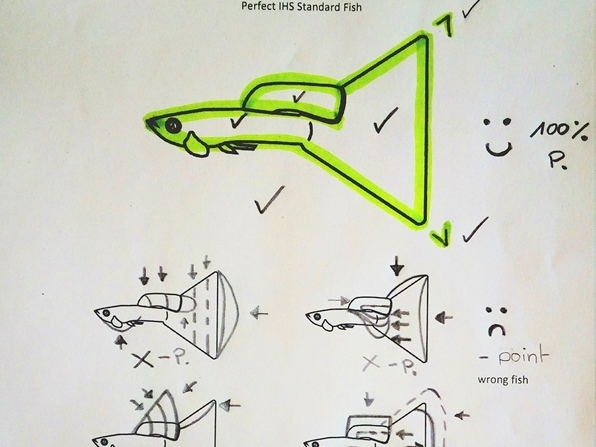
The problem with guppies is that they breed too well. While with many other tropical fish species one has to take a lot of precautions to install the right water composition, temperature or environment such that a pair would want to proceed to a successful egg deposition, a guppy has no need for an incentive for producing a progeny. The property of being vivipa-rous - the eggs are fertilized IN the female's body, and the young hatch from their eggs before being "born"- is a successful survival mechanism. It considerably increases the chances of a young to grow up, and makes the production of hundreds of eggs superfluous: putting 10 to 50 young on the world per litter is sufficient. If this happens in the enclosed space of an aquarium without attackers to eat them, the tank risks being really FULL of guppies in no time.
The "normal" way of the amateur is then trying to get rid of his too much of guppies, in one way or another. That is human, but actually the hobbyist should be prepared for this in advance. Just like the owner of a couple of rabbits or an unsterilized cat should be wary of that. Whoever wants to breed guppies without wanting to do any form of "birth control" should not let it come to that. For example, in a community aquarium, scalars will hunt and eat the little guppies, so the chance of overpopulation will be non -existent. Where there are no praedators in the tank, it is your own res-ponsibility to keep the number of guppies limited. A conscious way to deal with this is to provide a selection, what means: one chooses which ani-mals to keep, and which animals must "go". This elimination can be done in many ways, but will always shock "sensitive souls": give as food to feed chiclides, to the chickens, ... A quick death. In warm countries those "rejected" fish could be put back in the canals, but one has to be careful with that. After all, the guppy is an invasive species that can easily take up new habitats in which it is released, and can then become a "pest." It can only be kept outside here from June to September: it will die at tempera-tures below 15°C.
As far as selection is concerned: if one has to choose, one must know what to take into account. I have already emphasized several times that one real-ly does NOT have to follow the criteria of guppy clubs. After all, the empha-sis there is far too much on the shape of the fins and on the fixed patterns, and not on the colorsrichness. So I'm going to repeat myself when I re-commend that one should choose those guppies whose color one likes: based on one's personal preference. Don't let others dictate what you should like and what not. This way you can also breed your "personal gup-py", instead of, as is all too often the case, that people ask on a Facebook guppy group "what is the name of the strain" of his guppy. Those are just labels.
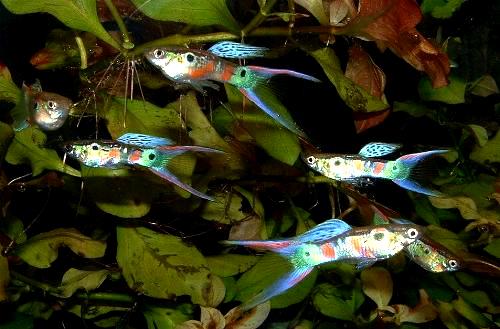
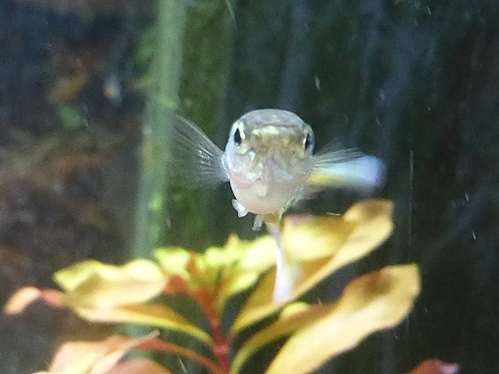
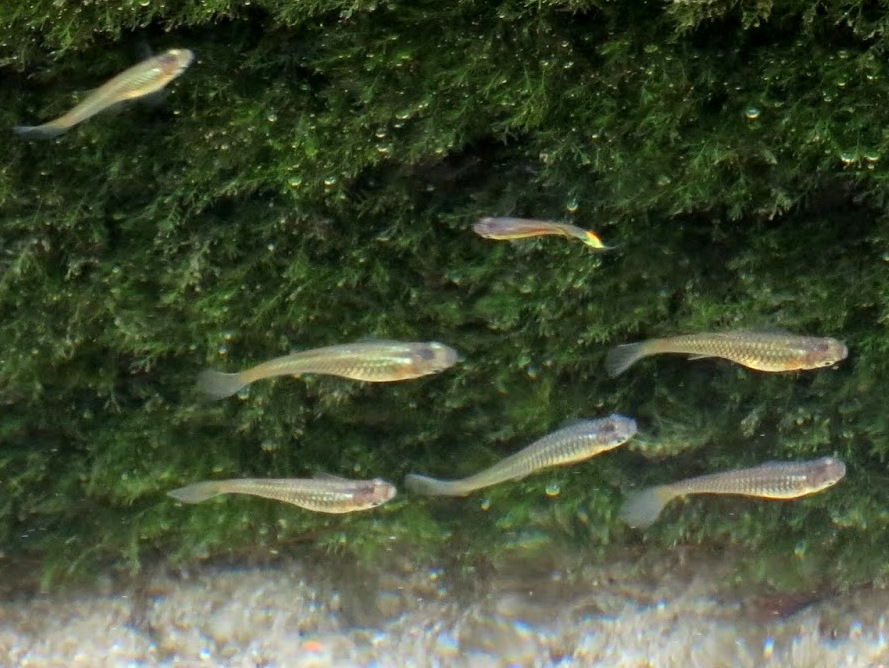
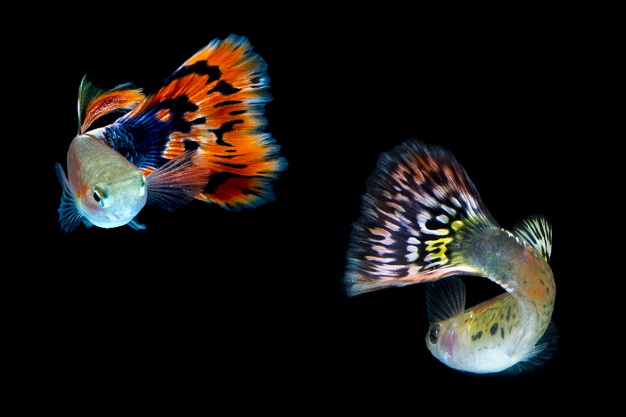
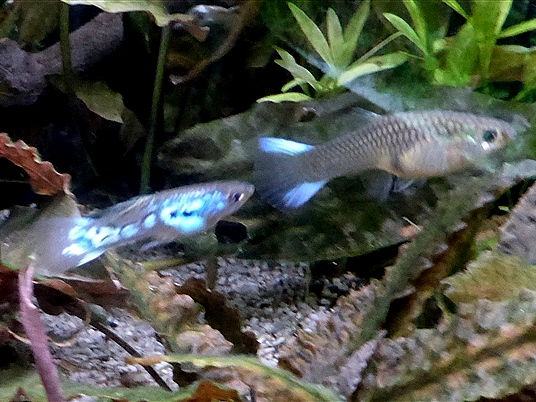

The selection is not only important to make a choice between which ani-mals you want to continue breeding, but also to keep the population within your aquarium HEALTHY. This is a natural principle that is all too often overlooked: the guppy is a schooling fish. In an aquarium one will rarely be able to observe this school-behaviour, because guppies are either with too little in a tank (for example a community aquarium), or with too much in a tank. But if, for example, you raise 20 guppies in a 100-litres tank, you will certainly be able to see how they swim in groups from left to right, and from surface to bottom. They follow each other. And there is also a certain hiearchy: the leaders of the group take the lead and determine the movements. With males, this is even more noticeable, because there is a constant duels combats to establish his place in that ranking, or move up a notch. In a tank with only males, this is even more the case, if possible, in the degree that older males can exhaust themselves in those duels.
If there are also females in the tank, there is one male who is the leader, and shows it by chasing the other males away from the females. Also under guppies one has tyrannical bosses who corner their opponents, and tole-rant bosses, who only occasionally assert their authority when it's necessa-ry. That is why plants in a container are always necessary: not only to pro-vide hiding places where females can give birth or young to hide, but also as resting places for both the females and the males to retreat from the battle hoots for a while.
A population is also composed differently: young fish seek out each other's company, which offers them a better chance of survival; and in nature adult females and males swim together, but growing fish dwell on the periphery thereof. Young males grow up together, measure themselves against each other and thus have time to grow into fully grown specimens. But this is NOT possible in an aquarium with a limited water content. Result: the males often mate too quickly and then stop growing. These too small males must then unfortunately be eliminated; after all, the chance that they are also genetically smaller is real, and this distinction cannot be seen on sight. In this context also something about large males: experience has taught me that the largest males are not the fish with the most beau-tiful colours.
Must be certainly removed: crooked specimens; many spinal deformities are hereditary in guppies. Deformed and diseased fish are immediately eliminated in nature. My experience has also shown that fish that suffer from fungus in a healthy population, for example, are animals that are extra susceptible to it. They can be quarantined and treated, but because of their susceptibility, the disease will reappear sooner or later. Unless it concerns an exceptionally beautiful or dear specimen, it is therefore better to opt for the short pain.
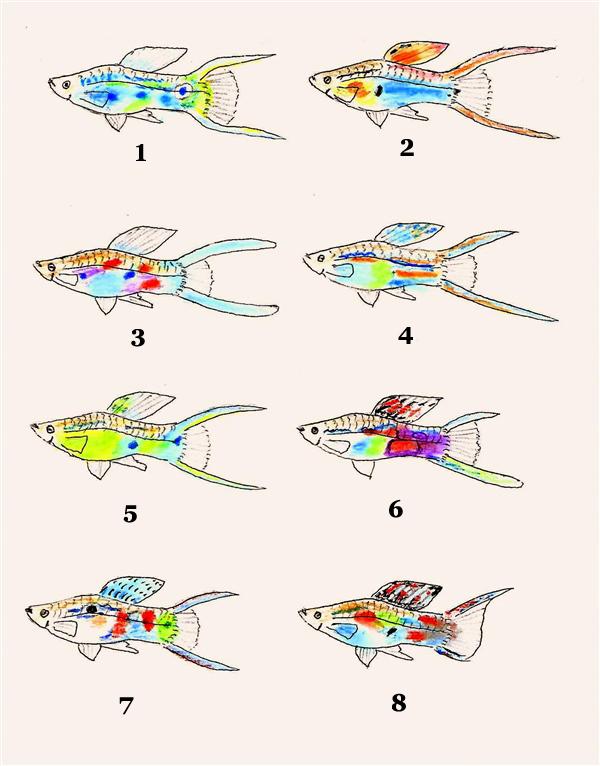
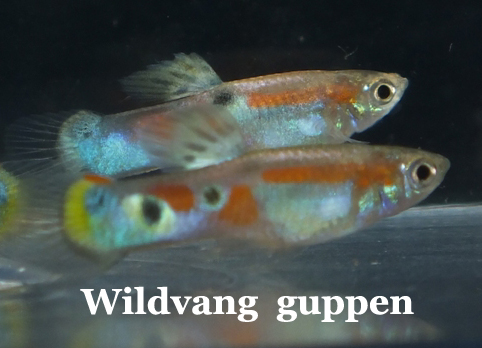

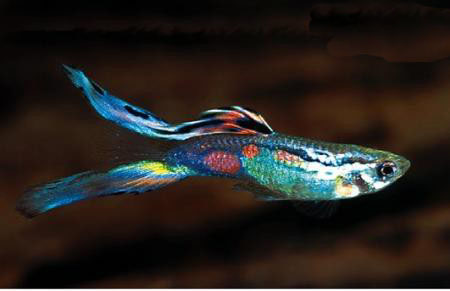
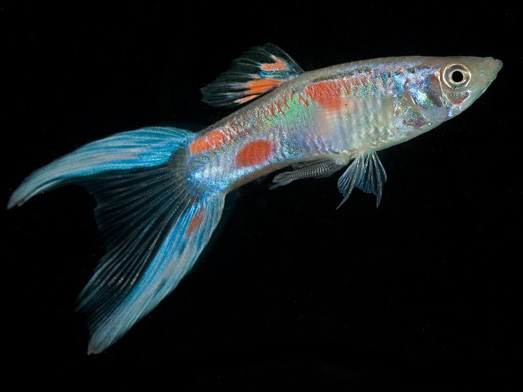
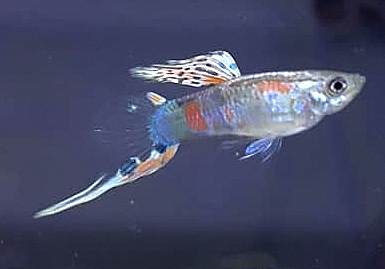
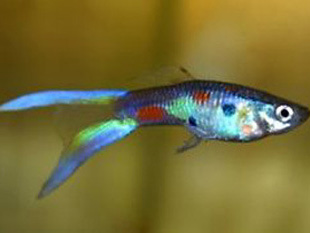
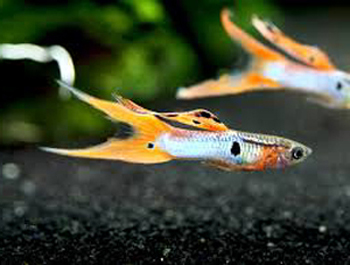
Time to visually explain the selection process with a practical example. Here I have drawn some variations of Double Swords on a figure side by side. You can also find a number of types in the photos to the left of them.
Those swords can have a certain thickness and length. Ranging from thick strips (3) - which are sometimes incorrectly called lyre tails - to fine and pointed swords. The real lyre tail has a curvature as in 1; in the East they are sometimes called Swallowtails. And those swords can be short or long. When Upper Sword and Lower Sword are of equal length, the type is ba-lanced. But that is by no means always the case: it is also possible to breed on Undersword or Oversword. Normally the Lower sword is slightly easier and more common.
As for the SHAPE of these swords, for points judging in guppy clubs, the longer and finer, the better. Type 2 would therefore score high in competi-tions. But the color of this fish is rather pale: this is a Japan Blue whose rear body is monotonous blue, so only the front body can show some play of colour. By crossing with Endlers one has grown orange to red double swords. 5 would be a close second, but this fish has almost no colors in its dorsal fin. Certainly now that the "High Dorsals" are rife, that would cost these fish points.
For those who like to see red, 3, 6, 7 and 8 are more likely to qualify. 3 is a frequently occurring type. The type can also have some black spots on the body, as is the case with 7. This can disturb the color play, but 7 has a very nice dorsal fin. For those who like to see purple, number 6 will be the favourite. However, it must be taken into account that purple is actually a kind of regression color in guppies, which initiates a certain bleaching and "pollution". Strictly speaking, number 8 has the "worst papers", but the disappearance of the swords can at the same time mean the advantage of not having to worry about them anymore, and being able to concentrate on the body colors.
For those who like blue and green, 1 and 5 will be good specimens. 1 has more blue and some extra attractive points, such as silver spots (Coins) and a blue chain on the back. But here, too, those patterns can easily turn to black, destroying the delicate harmony. That problem will have 5 less; but he rather suffers from a deterioration of the colors. I haven't mentio-ned 4 so far: swords of different sizes look less, but the orange stripes can have something special to breeding with, especially for those who like to see orange.
And so every fish has something special. In the selection, it is therefore a matter of following his own preference. But if the fish are very similar, this can be difficult (see photo below).
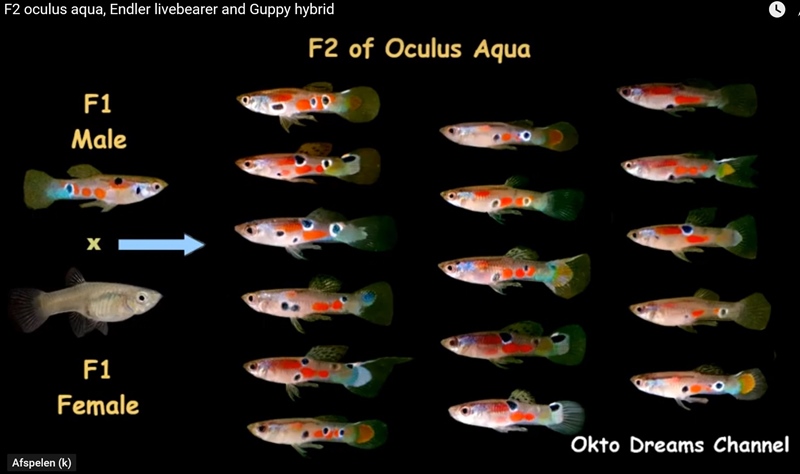
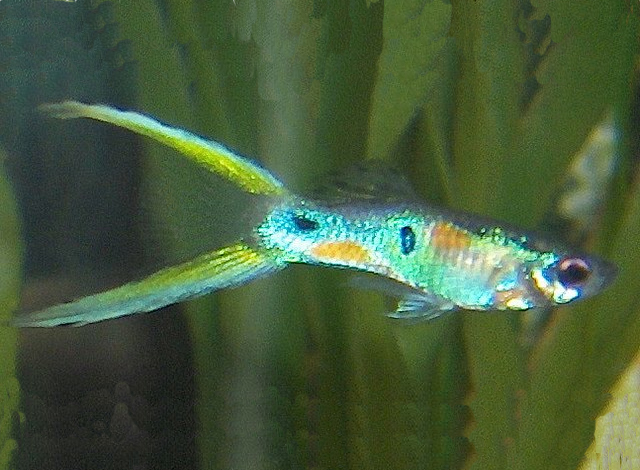
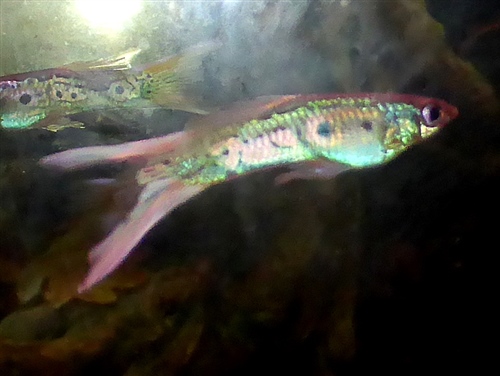
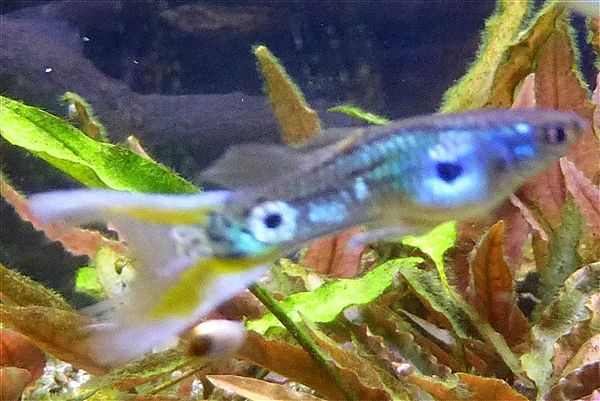
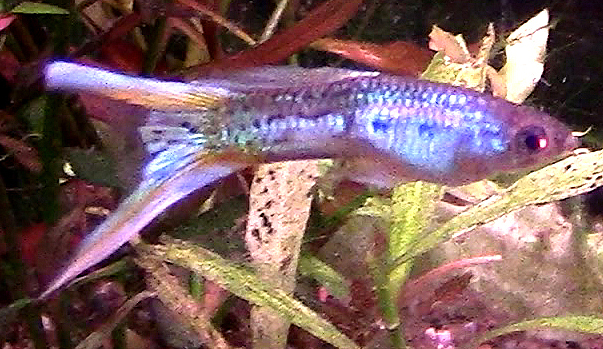
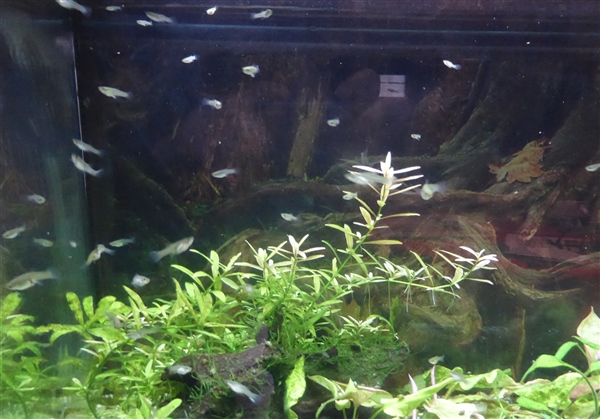
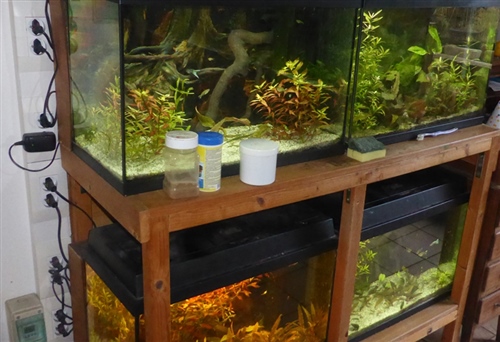
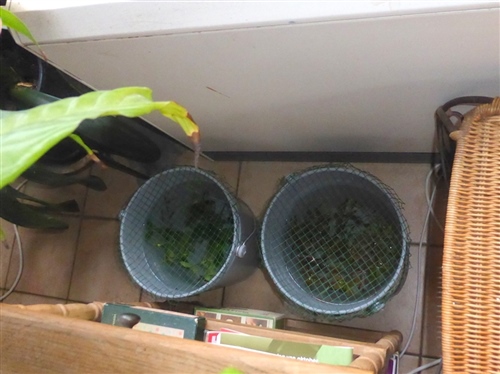
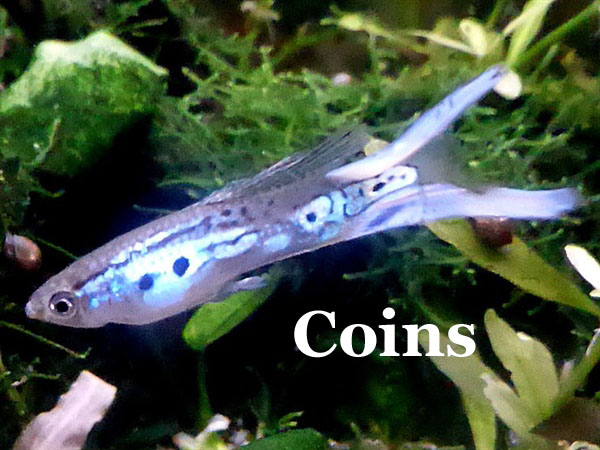
And practices, how are you going to implement this? The selection means that one determines one's selection criteria, that the number of fish per tank is limited, and that the number of types that one breeds is also limi-ted. After all, for the latter applies: the more strains one grows, the more aquariums one needs. Breeding guppies can get out of hand in many ways. PER strain that one breeds, one needs at least 3 to 4 aquariums: one for the parent pairs; one for the boy to grow up in; one to separate the growing males from the growing females; and possibly even more another one for his old breeding animals.
Growing fish need more space: I have 2 personally 100-litre tanks for that. The young grits and the breeding stock (I take an average of 3 to 4 females with 2 males) have enough with 50 liter tanks. Instead of working with delivery trays IN aquariums, I leave the females separate young by remo-ving the males, or the females a quiet spot in a 10 liter bucket with lots of plants in it, a mesh over it (against jumping !) and placed close to a heating element. Sometimes simple works best.
For the rest, there are few secrets about guppy breeding: feeding the fish regularly and alternately. Not too much, otherwise they will "blow up". Not too little, because then they risk growth arrest. Caught live food always carries the risk of introducing unwanted germs, parasites and guests into the aquarium, unless one would grow water fleas or mosquito larvae in a barrel outside. Frozen is a great alternative that can be administered once a day. Alternating feed flakes with dried artemia or shrimp completes the diet. For the small grits, this food must first be ground with a coffee grin-der, and there are brine shrimp from eggs as concentrate. The fish can find plant material themselves by grazing the algae on the windows, or snac-king on the plants in stock in the tank.
And with this the circle is almost complete: in the population of the bree-ding tanks, not all guppies grow at the same rate. This has to do with their ranking in the hierarchy, and aims to distribute the food in the environ-ment. A survival process that favors the strongest specimens. This means that there are always a number of "laggards" in growth. It is better to fol-low this natural selection process and to eliminate these smaller animals. They are, as it were, the reserve of the population: when a larger fish disappears and a place becomes available, they start to grow better, and take its place. But sometimes they are "overruled" by fast growing animals from the next litter. For these reasons, it is better NOT to lose time and space on these animals' ( by wanting to place them in another aquarium for example). Especially for females, it is better to eliminate these smaller ones, so as not to lose time in breeding the next generation. If one were to wait until they too had grown up, the risk is not inconceivable that the oldest males would start to die before they could be coupled to their daughters. After all, a guppy does not live long: in the wild an average of 1 year. They can live up to 3 years in an aquarium, but that depends on ideal conditions. Moreover, one will have to select the best females for breeding. Mating them all is not an option, if you want to keep some control over your guppy breeding.